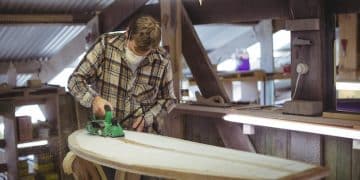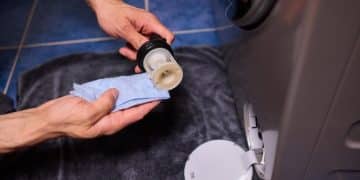DIY Car Cleaning: Detail Your Car Yourself & Save $50
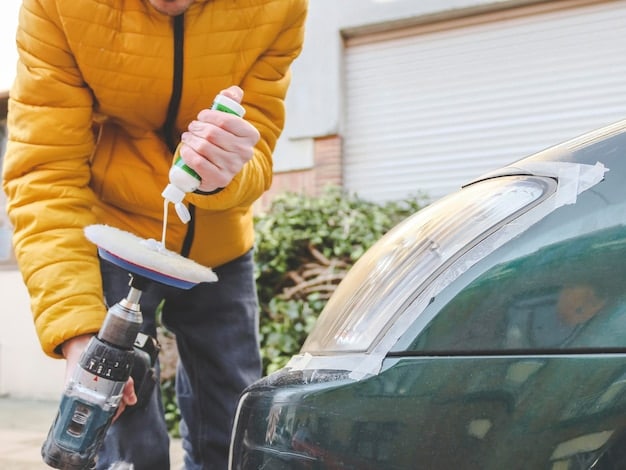
Save money and take pride in your ride by learning how to detail your car yourself; with the right tools and techniques, you can achieve professional-quality results and save up to $50 on professional detailing services.
Want to keep your car looking its best without breaking the bank? With **DIY car cleaning: Detail Your Car Yourself and Save $50 on Professional Services**, you can achieve a showroom shine from the comfort of your own driveway.
Why DIY Car Cleaning is a Money-Saving Must
Professional car detailing can be expensive, often costing upwards of $50 or more per service. By taking on the task yourself, you not only save money but also gain a deeper understanding of your car’s needs and how to properly care for it.
DIY car cleaning allows you to customize the cleaning process to your specific preferences and budget. You can choose the products that best suit your car’s finish and tailor your cleaning routine to address specific problem areas.
Cost Savings Comparison
Consider the breakdown of costs between professional detailing and DIY car cleaning:
- Professional Detailing: $50 – $200 per service
- DIY Car Cleaning: $20 – $50 for initial supplies, significantly lower ongoing costs
Over time, the savings from DIY car cleaning can add up significantly, making it a financially savvy choice. It’s also a rewarding experience that allows you to take pride in your car’s appearance.
Ultimately, DIY car cleaning represents a practical and cost-effective alternative to professional services, empowering you to maintain your car’s beauty while saving money.
Essential Tools & Cleaning Products for DIY Car Cleaning
To achieve professional-quality results with DIY car cleaning, it’s essential to have the right tools and cleaning products on hand. Investing in quality supplies will not only make the cleaning process easier but also ensure your car’s finish is protected.
From microfiber cloths to specialized cleaning solutions, the right arsenal of tools and products can significantly enhance your DIY car cleaning experience.
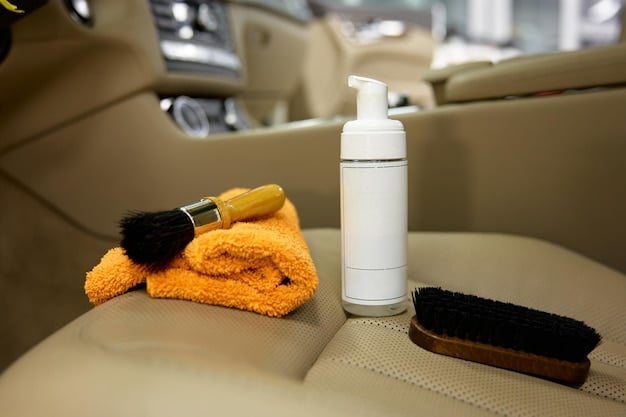
Must-Have Tools
- Microfiber Cloths: Gentle on paint, perfect for washing, drying, and polishing.
- Wash Mitt: Holds more soap than a sponge and is less likely to scratch the paint.
- Two Buckets: One for washing and one for rinsing to prevent dirt from contaminating the wash solution.
- Wheel Brush: Designed to reach tight spaces and effectively clean wheels and tires.
Having the right tools from the start will save you time and effort, giving you a professional-quality clean every time.
Step-by-Step Guide to Exterior Car Cleaning
Cleaning your car’s exterior can seem daunting, but by following a step-by-step process, you can achieve a sparkling finish with minimal effort. Start by gathering your supplies and choosing a shaded area to prevent the soap from drying too quickly.
This guide provides a detailed breakdown to ensure complete and thorough cleaning of your vehicle’s exterior.
The Washing Process
Begin by rinsing the car with water to remove loose dirt and debris. Then, using the two-bucket method, wash the car from top to bottom, paying attention to areas that accumulate dirt and grime.
Rinse the car thoroughly to remove all soap residue. Dry the car with a clean microfiber towel to prevent water spots.
Finally, apply wax or sealant to protect the paint and enhance its shine.
Interior Detailing: A Comprehensive Approach
Neglecting your car’s interior can lead to a buildup of dirt, dust, and stains. Detailing the interior involves a comprehensive cleaning process to restore the car’s cleanliness and comfort.
From vacuuming to cleaning upholstery and dashboards, this section provides a step-by-step guide to achieving a spotless interior.
Cleaning the Interior
- Vacuum Thoroughly: Remove loose dirt and debris from carpets, seats, and crevices.
- Clean Upholstery: Use a specialized upholstery cleaner to remove stains and refresh the fabric.
- Wipe Down Surfaces: Use a microfiber cloth and interior cleaner to clean dashboards, door panels, and consoles.
Finally, apply an interior protectant to shield surfaces from UV damage and maintain their appearance.
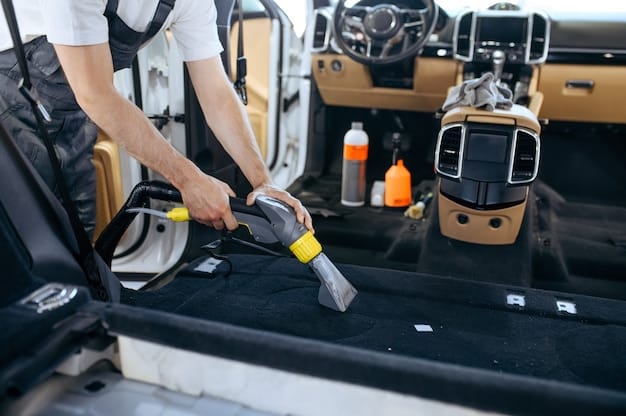
Advanced Techniques for Car Cleaning Perfection
For those seeking to take their car cleaning skills to the next level, there are several advanced techniques that can enhance the results. These techniques involve using specialized tools and products to address specific problem areas and achieve a showroom-quality finish.
From clay bar treatments to paint correction, these advanced techniques can help you restore your car’s paint and protect it from future damage.
Clay Bar Treatment
A clay bar treatment is used to remove embedded contaminants from the paint surface, leaving it smooth and ready for polishing. It’s an essential step for achieving a flawless finish.
To use a clay bar, spray the paint surface with a clay lubricant and gently rub the clay bar over the surface in a back-and-forth motion. Wipe away the residue with a clean microfiber cloth.
Finally, polish the paint to restore its shine and apply a protective wax or sealant.
Maintaining Your Clean Car: Tips and Tricks
Keeping your car clean requires regular maintenance and the right approach. By following a few simple tips and tricks, you can extend the life of your car’s finish and keep it looking its best for years to come.
Developing a consistent cleaning routine and using protective products can help you maintain your car’s appearance and prevent costly repairs.
Protection Strategies
- Wash Regularly: Wash your car at least once a week to remove dirt and grime before they can cause damage.
- Apply Wax or Sealant: Protect the paint with a regular application of wax or sealant.
- Park in the Shade: Whenever possible, park your car in the shade to prevent sun damage.
- Use Seat Covers: Protect upholstery from stains and wear with seat covers.
By incorporating these simple maintenance strategies into your routine, you can safeguard your car’s appearance and maintain its value.
| Key Point | Brief Description |
|---|---|
| 💰 Cost Savings | DIY detailing saves money compared to professional services. |
| 🛠️ Essential Tools | Microfiber cloths, wash mitt, and wheel brushes are crucial. |
| 🧼 Exterior Cleaning | Wash, rinse, and wax your car’s exterior regularly. |
| 🛡️ Protection | Regular washing and waxing protect your car’s finish. |
Frequently Asked Questions
▼
Washing your car once a week helps prevent dirt and grime from damaging the paint. Regular washing keeps it looking its best and preserves its value.
▼
Use car wash soap designed specifically for automotive finishes. Dish soap can strip away wax and damage the paint, so it is best to avoid it.
▼
Use a specialized upholstery cleaner to target stains. Apply the cleaner according to the instructions, and gently blot the stain with a clean cloth to help it lift.
▼
Waxing protects the paint from UV rays and environmental contaminants. It provides a barrier that keeps your car looking shiny and new for longer, adding durability.
▼
A clay bar removes embedded contaminants from the paint surface, leaving it smooth and ready for polishing, improving the overall finish and shine of your car.
Conclusion
With the right knowledge and tools, tackling **DIY car cleaning: Detail Your Car Yourself and Save $50 on Professional Services** is both achievable and rewarding. Save money while taking pride in a sparkling clean car, and remember regular maintenance is key to long-lasting results.
